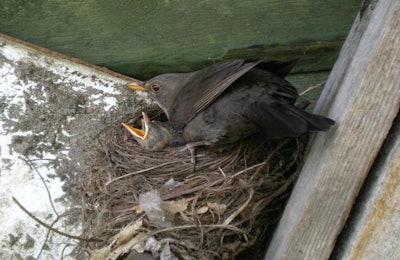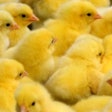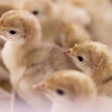
Where their next meal is coming from is rarely a concern for broilers or layers on most modern poultry farms. From day-old chick to the end of the production cycle, feed is rarely in short supply.
There’s feed aplenty – certainly enough to attract wild birds onto farms where biosecurity and management are poor.
But having to fight for food or feed when younger seems to result, for some species at least, in adult birds that eat more.
A study of European starling chicks has found that smaller chicks that find it harder to feed from their parents grow up to be bigger birds.
Conducted by Newcastle University, the study revealed that starling chicks that have a difficult start in life grow to not only be fatter, but are also greedier than their more fortunate siblings.
The smallest chicks in the families studied changed their adult feeding behavior, resulting in a fatter body composition.
Building up body fat reserves to safeguard against potential famine is an evolved survival mechanism, but what was found was that birds that had struggled for food early on were keener on finding food, and tended to over-eat when adults, said Dr. Clare Andrews, from Newcastle University’s Centre for Behaviour Evolution.
Tough start in life
To ensure that some birds were disadvantaged and experiencing greater competition in the study, smaller starling chicks were placed in a brood with significantly larger hatchlings.
These poor unfortunates had to work harder than their bigger brothers and sisters to be fed, spending more energy on calling to their parents for food and jostling to the best feeding position.
Andrews explained: “The smallest chicks were bottom of the heap and had a tougher time because they would have had to beg hardest for food.”
These chicks were then compared with birds that were placed in broods with significantly smaller chicks. After 10 days, disadvantaged and advantaged chicks all lived together in relative luxury. It was only their “chickhoods” that differed.
Greedy adults and lazy feeders
Later in life, these same birds were offered a choice between feeding from easily accessible sources of crumbs and spending more time and energy foraging for crumbs hidden in sand.
Birds that had the tougher start in life spent more time searching for hidden crumbs, despite the ready availability of alternative sources and ate more of the freely available crumb when they accessed it.
The birds that had an easier start, having been the largest in the nest, opted instead to take the easy pickings, and only in moderation.
The Newcastle team suspects that the birds with a tougher start, the disadvantaged starlings, were behaving as if they were worried food might run out, suggesting that they have a “memory of hunger,” from when they were small, and driving them to overeat when presented with freely available food.
While I’m not suggesting that broiler or layer chicks should be given a hard time on hatching, there might be something to learn from the experience of these less fortunate starlings.


















